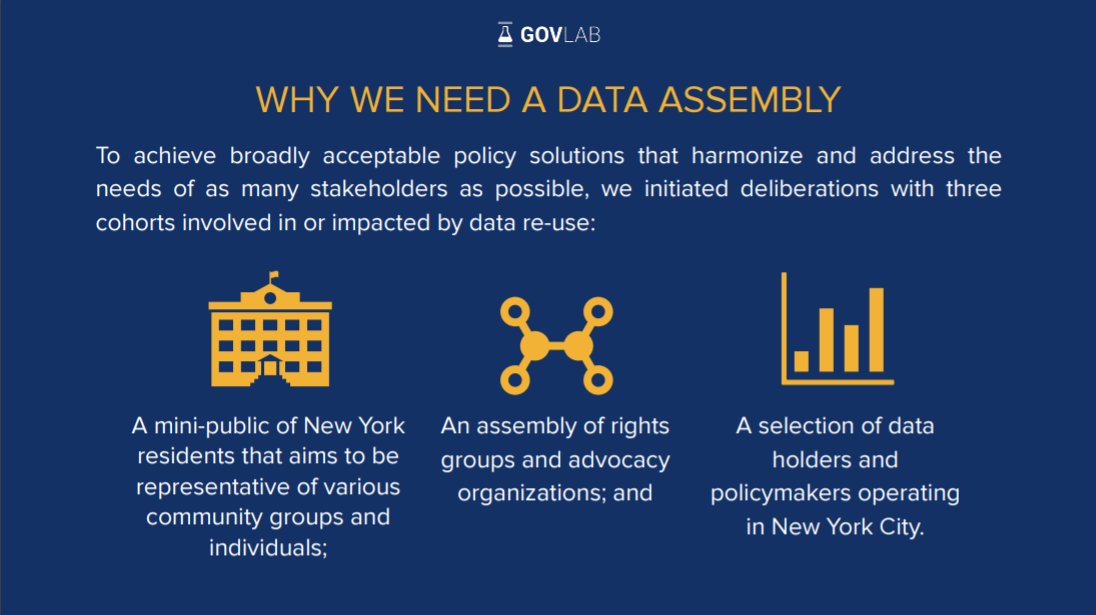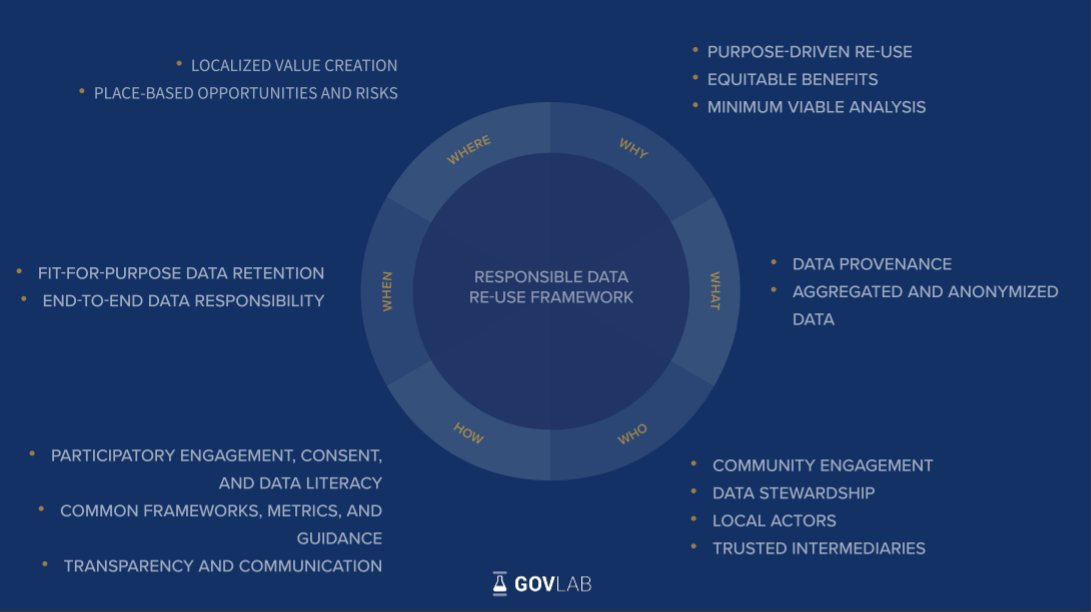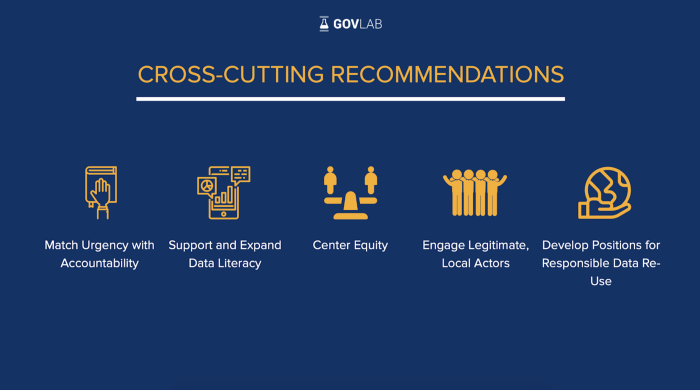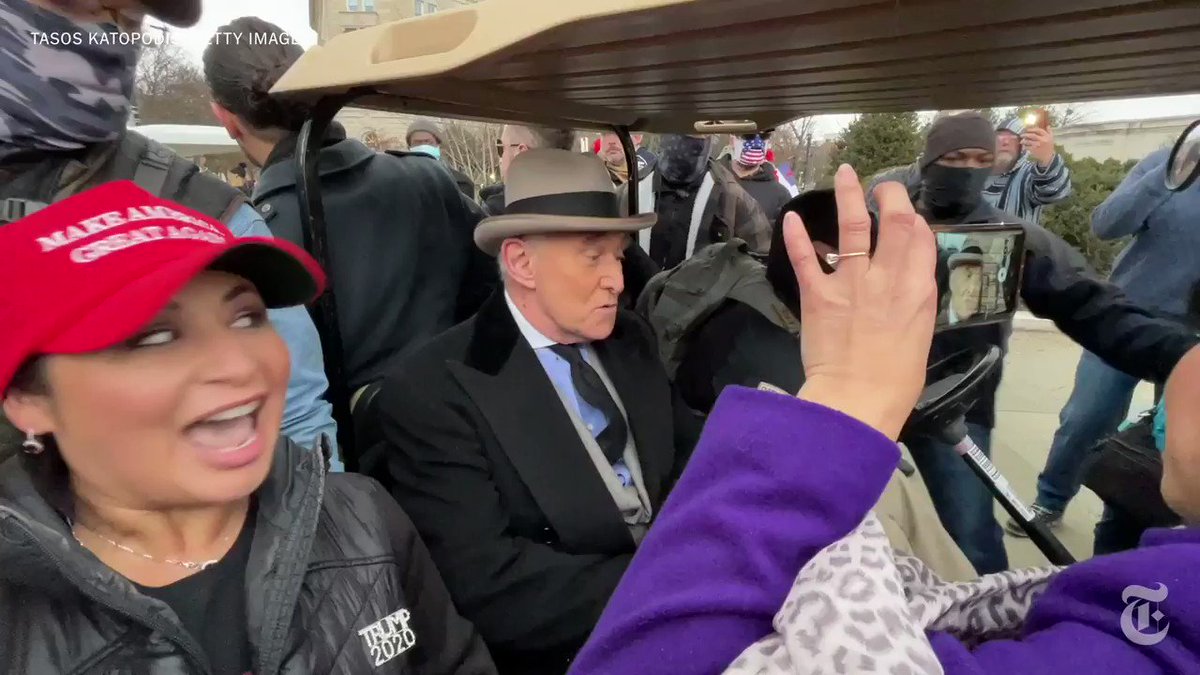He notes how big data, the internet of things, and other innovative solutions could help New Yorkers address real challenges.
The GovLab's Stefaan Verhulst will be testifying on smart city oversight before the NYC Council's Committee on Technology at 1:00 PM. You can watch him and the other witnesses live in Virtual Room 2 at:
He notes how big data, the internet of things, and other innovative solutions could help New Yorkers address real challenges.
He notes his focus will be on the city's work in Internet of Things, where NYC leads nationally and internationally.
"Equitable connectivity is a foundation of the smart city. Widespread broadband is needed to connect the tools and sensors that make up IoT."
Farmer: This problem has been created over decades. The Internet Master Plan is the framework for response. In February, we'll be releasing an RFP for universal broadband that will invite in everyone.
Farmer: Mayor has said 2025 is a target but this problem will be addressed in chunks, a little bit at a time.
Chair: So it will be rolled out in parts of the city piece by piece?
Farmer: Yes.
Farmer: At the core of a smart city is data, hyperlocal data that can be actionable. That's where we've focused during the pandemic, making sure we're more data-driven.
The Chair says there's a need for signs on IoT devices so people know what's outside their homes.
Farmer says that, to put in place 5G, that requires more broadband equipment in more places, such as rooftops and poles.
Farmer says City will work with communities to determine where and how tech can be deployed.
Farmer says the Partnership is ongoing effort by community, non-profit, and private orgs to share data with NYC to aid in COVID-19 response and recovery. More info can be found at: https://t.co/hW1tey591f
He calls for the City to invest in tech to better understand human behavior amid the pandemic.
He references that he previously testified before the committee on the need for data collaboratives, a new form of collaboration beyond the public-private partnership model, in which participants from different sectors exchange their data.
He describes The GovLab's work on The Data Assembly, an initiative to solicit diverse, actionable public input on data re-use.
The analysis revealed several interesting takeaways.


Among the first of these recommendations was the need to invest in data literacy across the public. If people don't understand what data is or how it is used, they cannot be active agents in its

By engaging regularly with the public, the City can promote trust for all its data reuse work, especially amid the pandemic.
He describes some projects that GCOM has engaged in Maryland and elsewhere to promote more "frictionless" interactions with government agencies.
SV answers that there are several ways. One major component of trust-building is providing transparency. People need to know how and why their data is being used by the city.
Deliberation provides a way to understand what makes ppl comfortable and what they seek to happen.
More info can be found at: https://t.co/GjAep5eWHk
Stefaan says NYC is a leader in this area but, like much of the world, city open data is supply-driven. If we combine data supply w/ a understanding of the demand, we can better target work.
Stefaan explains that the term refers to those who are included in datasets agreeing to how data is being used by others. Stat agencies worldwide depend on social license to collect & analyze data
He draws attention to failed smart city efforts in places like Toronto where leaders did not secure public consent before embarking on work. The result was that these projects were canceled amid controversy.
Thank you all who followed along via Twitter. If you are interested in The GovLab's work on the Data Assembly, you can find more information here: https://t.co/1RsFnUD2tV
More from Government
🧵⬇️1. Fb is LifeLog, LifeLog is Darpa, and DARPA is a Enterprise Run by CIA... Well... Past President... Big Tech, Big Pharma, MSM, HOLLYWOOD, DC...
Past Presidents....Zuckerberg, Gates...
All C_A... the Family business.... The company...
2. Past Presidents....Zuckerberg, Gates...
All C_A... the Family business.... The company...The Farm.... all C_A assets... most of them related by blood, business, or marriage...

3. "The individual is handicapped by coming face-to-face with a conspiracy so monstrous he cannot believe it exists. The American mind simply has not come to a realization of the evil which has been introduced into our midst." - J. Edgar Hoover

4. diff. names & faces.... Monsters that lurk in the Shadows. Swamp, Deep State, Establishment, Globalist Elite Cabal...
Shall we go back...How far back...

5. I know these monsters... it's when I try to explain them to others is when I run into a problem.This is why I'm better at retweeting and compiling. I never know where to start... Everytime I try to thread, i end up w/ a messy monstrous web.I'm better at helping others thread.

Past Presidents....Zuckerberg, Gates...
All C_A... the Family business.... The company...
BREAKING\u2014 \u201cThis \u2018SHADOW GOVERNMENT\u2019 had a huge hand in running the show on Nov. 3 and you may have not known it\u201d says attorney Phil Kine. @newsmax pic.twitter.com/8ypASTEA1Z
— White Rabbit News \u277c (@WhiteRabbitNN) December 17, 2020
2. Past Presidents....Zuckerberg, Gates...
All C_A... the Family business.... The company...The Farm.... all C_A assets... most of them related by blood, business, or marriage...

3. "The individual is handicapped by coming face-to-face with a conspiracy so monstrous he cannot believe it exists. The American mind simply has not come to a realization of the evil which has been introduced into our midst." - J. Edgar Hoover

4. diff. names & faces.... Monsters that lurk in the Shadows. Swamp, Deep State, Establishment, Globalist Elite Cabal...
Shall we go back...How far back...

5. I know these monsters... it's when I try to explain them to others is when I run into a problem.This is why I'm better at retweeting and compiling. I never know where to start... Everytime I try to thread, i end up w/ a messy monstrous web.I'm better at helping others thread.

If you're curious what Trump's defense will look like, all you have to do is turn on Fox News. My latest at @mmfa
The tl;dr is that for years right-wing media have been excusing Trump's violent rhetoric by going, "Yes, but THE DEMOCRATS..." and then bending themselves into knots to pretend that Dems were calling for violence when they very, very clearly weren't.
And in fact, this predates Trump.
In 2008, Obama was talking about not backing down in the face of an ugly campaign. He said "If they bring a knife to the fight, we bring a gun."
https://t.co/i5YaQJsKop

That quote was from the movie The Untouchables. And there's no way anybody reading that quote in good faith could conclude that he was talking about actual guns and knives. But it became a big talking point on the
In 2018, Obama-era Attorney General Eric Holder was speaking to a group of Georgia Democrats about GOP voter suppression. He riffed on Michelle Obama's "When they go low, we go high" line from the 2016 DNC.
The tl;dr is that for years right-wing media have been excusing Trump's violent rhetoric by going, "Yes, but THE DEMOCRATS..." and then bending themselves into knots to pretend that Dems were calling for violence when they very, very clearly weren't.
And in fact, this predates Trump.
In 2008, Obama was talking about not backing down in the face of an ugly campaign. He said "If they bring a knife to the fight, we bring a gun."
https://t.co/i5YaQJsKop

That quote was from the movie The Untouchables. And there's no way anybody reading that quote in good faith could conclude that he was talking about actual guns and knives. But it became a big talking point on the
In 2018, Obama-era Attorney General Eric Holder was speaking to a group of Georgia Democrats about GOP voter suppression. He riffed on Michelle Obama's "When they go low, we go high" line from the 2016 DNC.


















